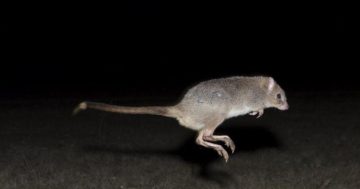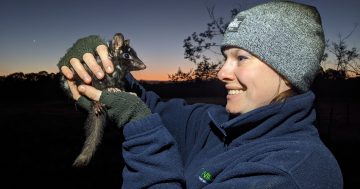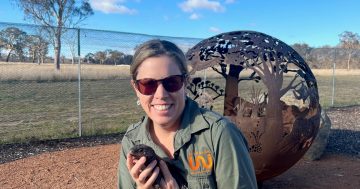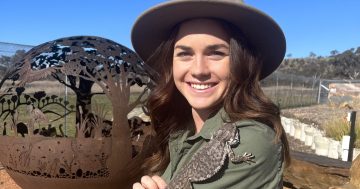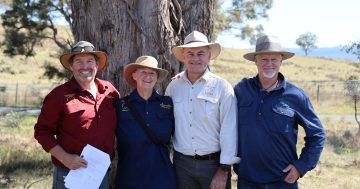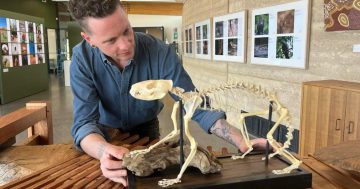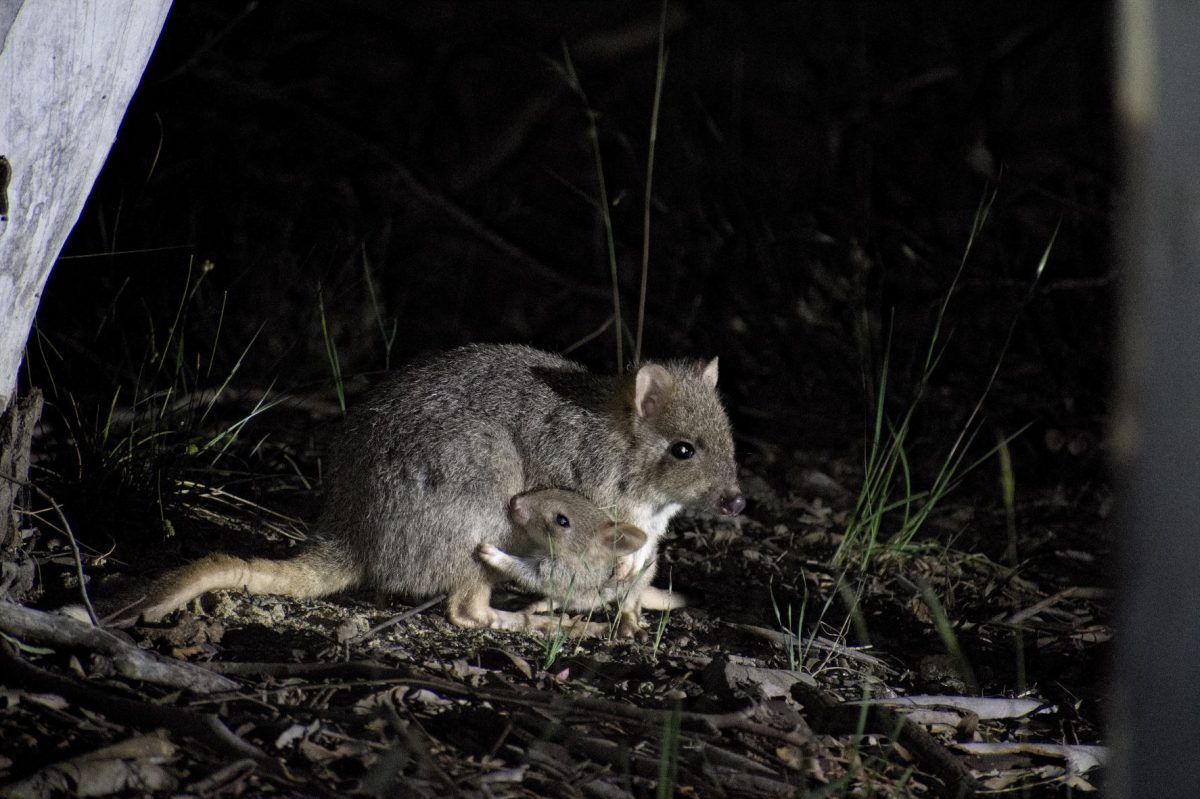
Bettong numbers were high until the arrival of foxes, cats and rabbits. Photo: Mulligans Flat Woodland Sanctuary.
The Eastern Bettong was one of Australia’s most prolific marsupials before the Europeans came along and brought foxes, cats and rabbits with them. By 2012, only Tasmania’s population remained.
However, they’re now back in the ACT – and bettongs are thriving again.
Canberra ecologist Millie Sutherland Saines spends her time chasing quolls and echidnas at Mulligans Flat in Gungahlin, a wildlife sanctuary looked after by the Woodlands and Wetlands Trust. She can now add bettongs to that list.
“Their other name is rat kangaroo, which I don’t enjoy,” Millie says.
Ten years ago, a founder population of 36 bettongs were reintroduced into a fenced enclosure at Mulligans.
“We basically went across Tasmania to get a bunch of them, flew them overnight from Hobart to Canberra and released them the same night,” she says.
“They didn’t even know they had left Tassie.”
Over 100 healthy and happy bettongs can now be seen bouncing around the sanctuary.
“They’re doing really well.”
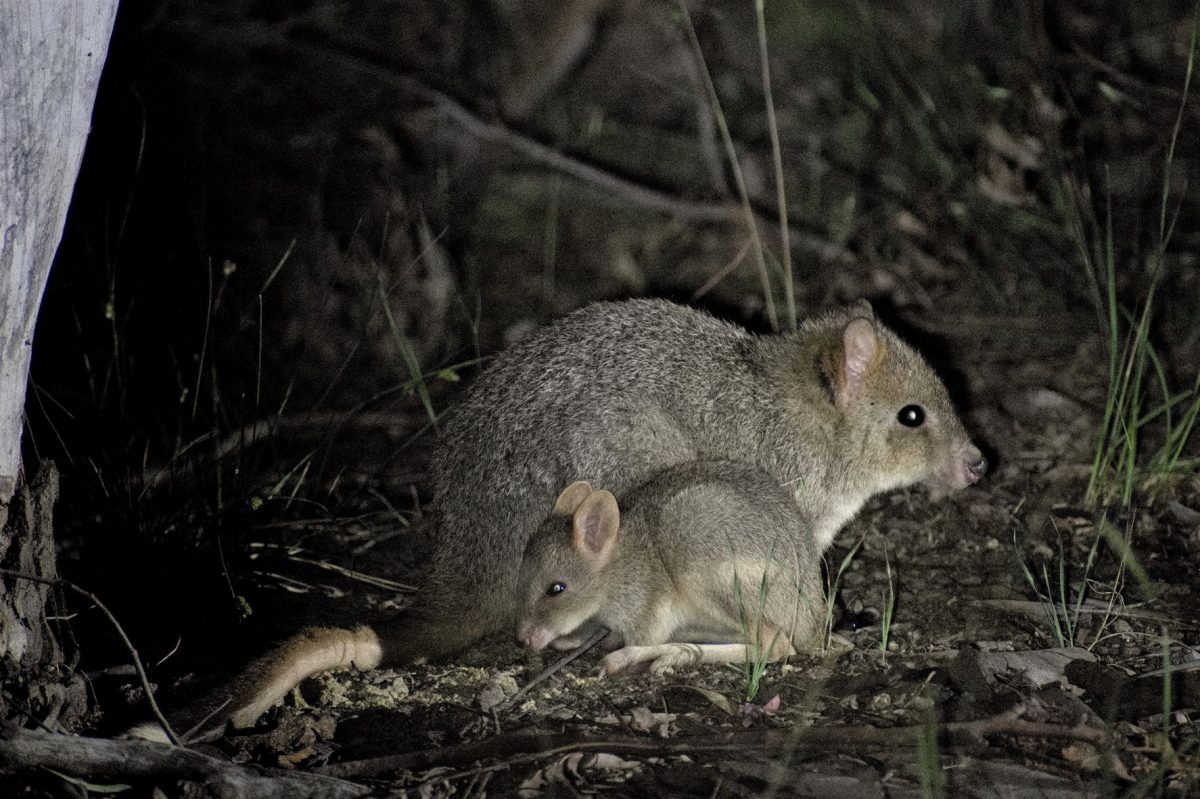
Bettongs are also known as ‘rat kangaroos’. Photo: Mulligans Flat Woodland Sanctuary.
Mulligans expanded the fenced sanctuary from 485 hectares to over 1200 hectares in 2018 and rangers with ACT Parks and Conservation have spent the past five years ridding the area of foxes. It’s now ready to take even more bettongs.
“Now that the last and pesky fox is gone, we’re looking to move some of the bettongs and some of our Eastern Quolls into this new section,” Millie says.
“All up, 120 is about as many as we could fit within the original sanctuary, so we’re really excited about this whole new section. Their numbers can double.”
Millie describes a bettong as a mini, 1.5 kg kangaroo with a big round nose for digging up truffles.
“They’ve also got massive claws for digging up those truffles and insects,” she says.
Millie says the numbers have fluctuated in the 10 years bettongs have been in the sanctuary.
“At the end of the drought, their numbers were lower and we had this really big peak in 2016 after heavy rain,” she says.
A trial release in the Cotter Reserve met mixed results. The biggest and crankiest bettongs were selected for a return to the wild, but Millie says they found that as soon as the young left the dens, they succumbed to predators.
“The foxes really hammered them,” Millie says.
“We’re now looking at ways we can smarten up the bettongs by introducing natural predators into the sanctuary before we release them into the wild with the very cunning foxes.”
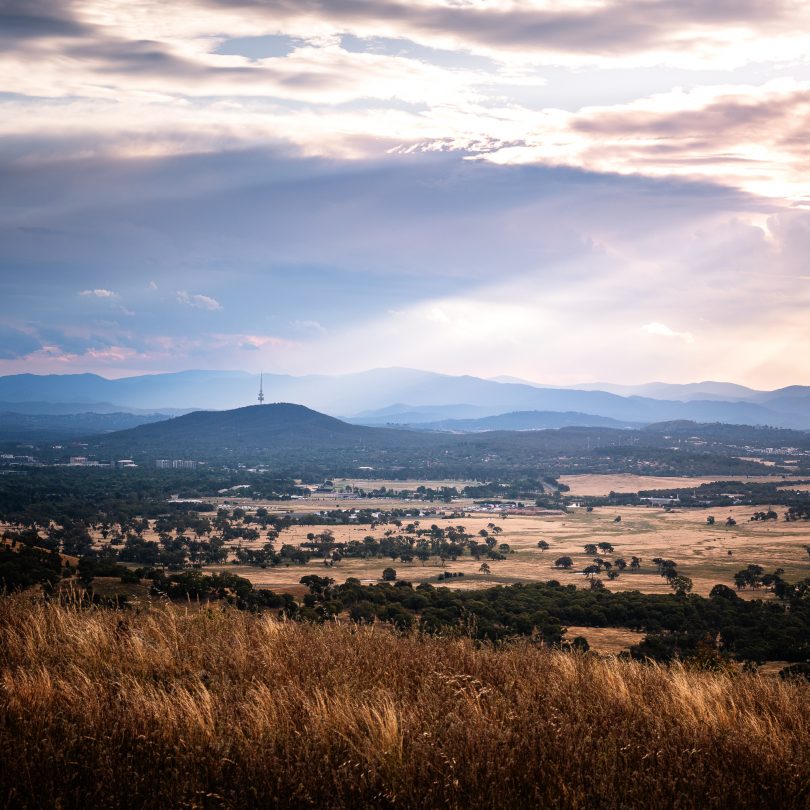
Mulligans Flat has been an essential nature reserve in the ACT for 15 years. Photo: Mulligans Flat.
Mulligan’s Flat has been a bed of nature research and conservation for more than 15 years. It’s the only fenced reserve next to a city in Australia. The bettong project is a partnership between the ACT Government and the Australian National University (ANU).
Because it’s an ACT Parks Reserve, the government has responsibility for managing the site, while the ANU has been “fundamental to all the reintroductions and the fence going in”.
“There was a lot of research done to determine what species are no longer in this region, and so we now have this big list of species we want to put back now that the predators are kept at bay,” Millie says.
“We think it’s really important that we’re educating our community about the species that used to live here and the cause of their decline.”
The bettongs can be spotted during a Mulligans Flats Twilight Tour, a two-hour, 4 km guided tour of the sanctuary. Book online.













